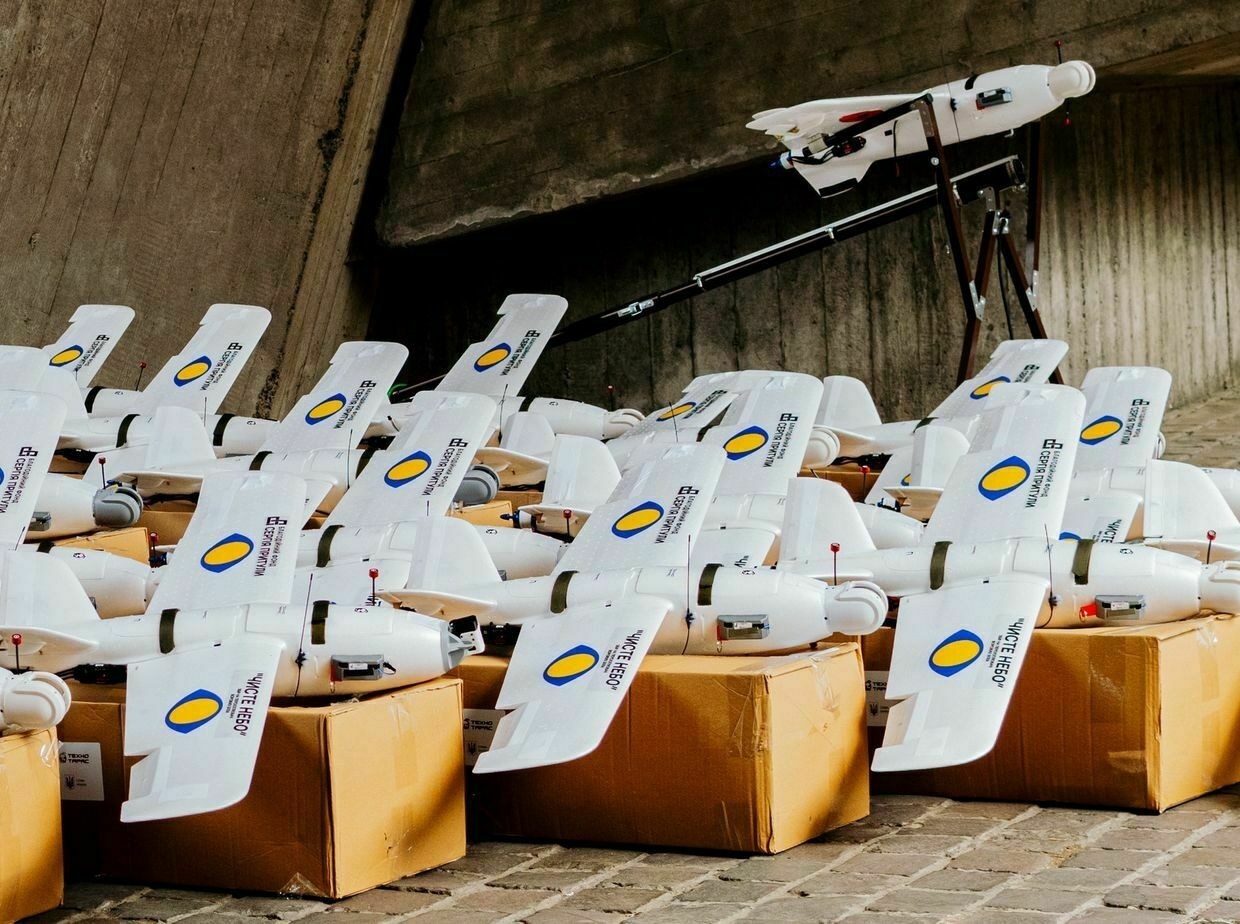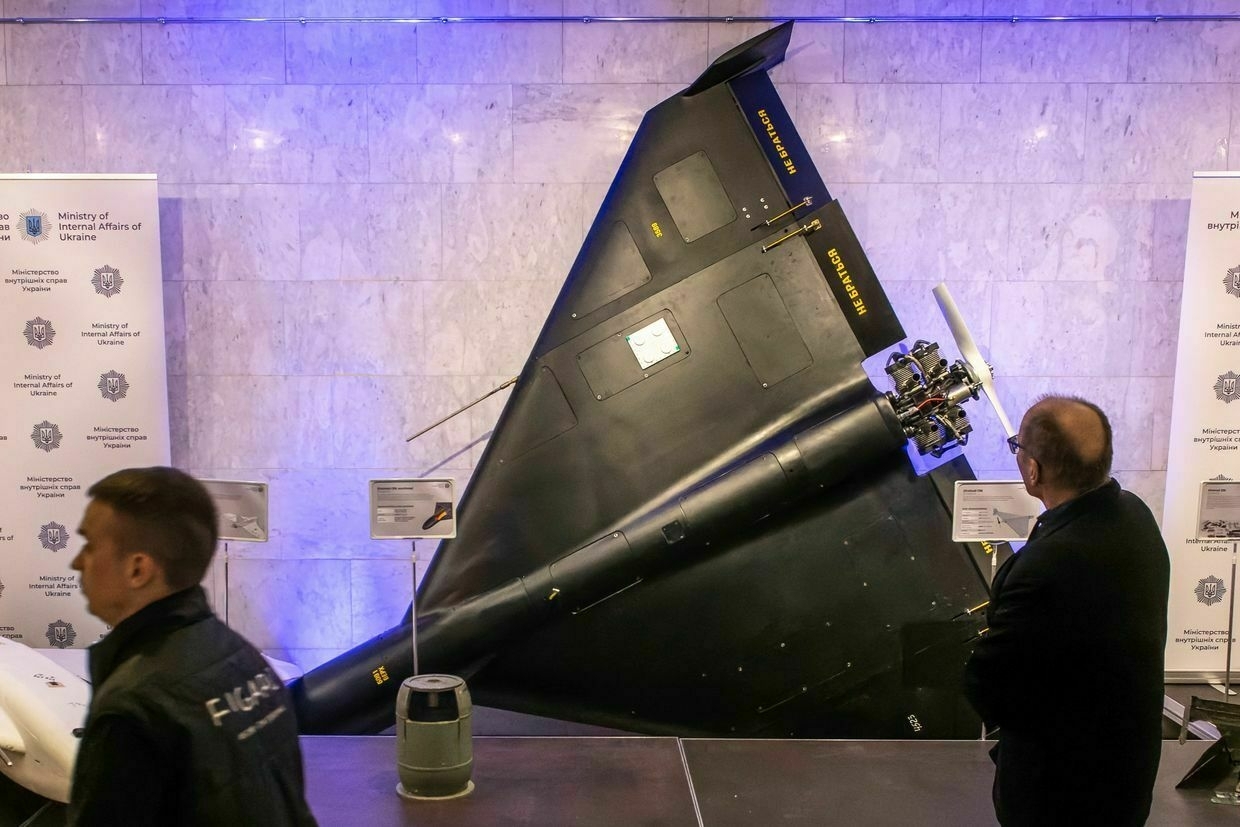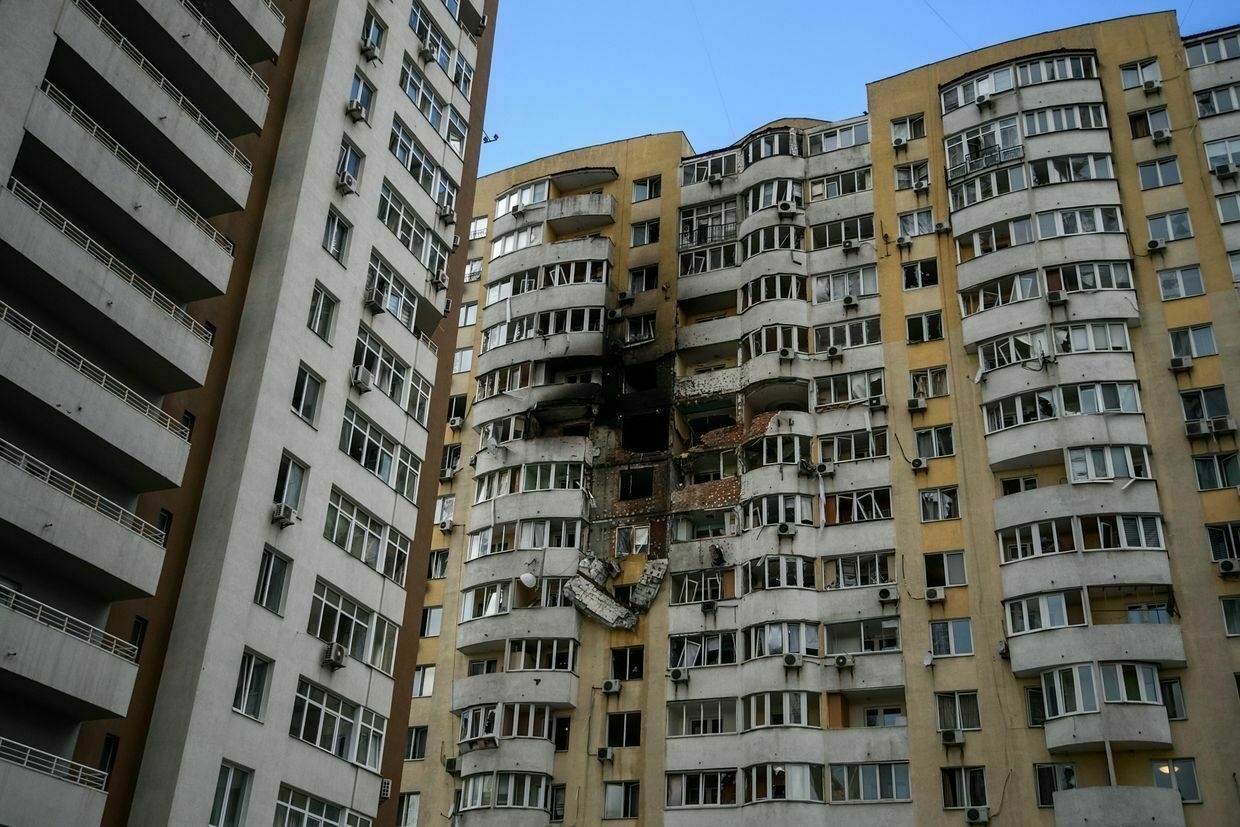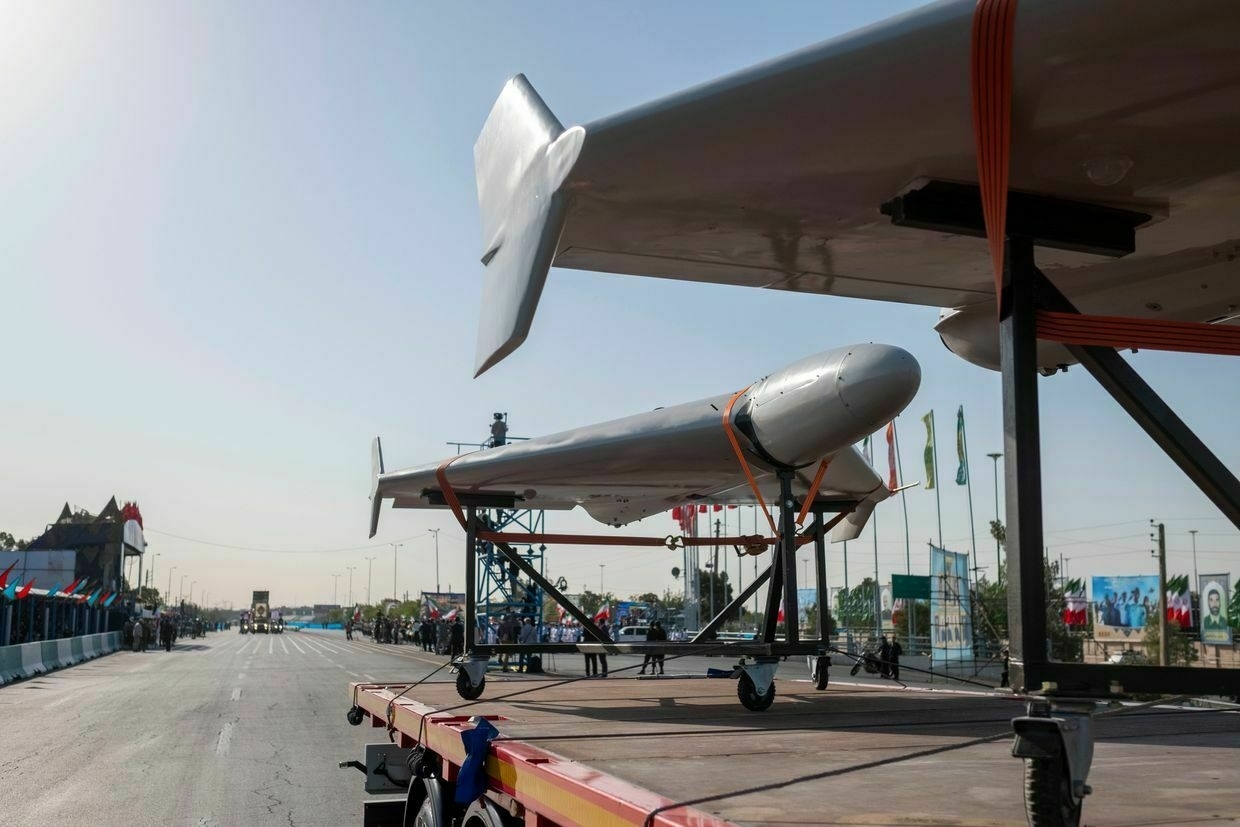
Russia’s Shahed drone swarms are pummeling Ukraine on a nightly basis, inflicting ever more death and destruction in cities that had managed to carve out some sense of normalcy amid wartime.
Civilian alarm has grown. With traditional air defense stockpiles running low, the government is banking on newly created “interceptor-drones” to restore a baseline of public safety.
“Ukraine is already using interceptors to shoot down Shaheds and is expanding their production,” President Volodymyr Zelensky’s office wrote on June 21.
As with much of Ukraine’s unmanned aerial vehicle development, a fleet of nascent interceptor drones — which shoot other drones out of the sky — is filling a gap in more traditional anti-air defenses, as the U.S. cuts its weapons aid and Russia expands its drone fleet.
“If at the start we had some kind of SAMs, missiles, Javelins, air-defense systems — including enough rockets for them — now they’ve started to run out, and we’re running a deficit,” said Bohdan Danyliv, who heads the military department of the Serhiy Prytula Fund, a Ukrainian charity that also helps to finance military developments, including the new interceptor drones.
The Ukrainian government’s defense tech apparatus publicly established anti-Shahed defense as a top priority as of the beginning of 2025. But only in recent months, with radically expanding attacks, has the government begun hastening to get the new systems working. Officials are now calling these anti-Shahed drones a top concern.
“We need to make it so the Russians cry bitter tears, so they’re afraid to take flight.”
“Assignment number one: The cultivation and scaling of means that already work effectively. Most of all: increasing the number of unmanned aerial vehicle interceptors,” Ukraine’s Air Force wrote in a June 14 Telegram post.
Some models of the new generation of interceptor drones have played a role at the front for at least a year, largely shooting down Russian reconnaissance drones like Merlins or Zalas that loop across much of the front line. But Shahed defense has proved a bigger issue.
“A Shahed is much faster, by a factor of two, and you don’t just need to catch up to it, you need to overtake it,” said Danyliv. “A Zala or an Orlan does recon, and so it circles. A Shahed flies straight, and your radar has a range of 25-30 kilometers, which a Shahed passes through in just a couple of minutes.”
Several of the new projects have appeared across various social media channels in the past month. One, the Sting, is an interceptor drone that has accomplished what seems to be the first filmed destruction of a Russian long-range Shahed-type drone in what the Sternenko Community Fund called “Another Shahed shot down by an FPV from the community, in collaboration with Wild Hornets.”
“We cannot name producers, out of security considerations,“ a representative for the Sternenko Community Fund wrote in a statement to the Kyiv Independent. “However, recently the situation has been changing, and we are already seeing positive movement in this area.”
“Before this, our mobile-fire groups and helicopters fought the Shaheds relatively well,” said a representative for Wild Hornets, the producer and charity fund that makes the Sting, who asked not to be named out of safety concerns.
But after recent months saw a radical uptick in the number of Shaheds flying over Ukraine, as well as their concentration on a single city at a time, “the administration started to understand that the Shahed is a serious strategic advantage for the Russians.”


Another new anti-Shahed drone made an appearance in a video Zelensky posted early in April, touting co-production with Belgium. The announcement said that as of then, it had downed upwards of 20 Russian drones of that kind. Those drones seem to have been another kamikaze model called the Shulika.
Danyliv says it was already clear last year that Ukraine would need to modify drones to take down Shaheds. He laments that the government only shifted focus to those anti-air developments in the past few months, once Shahed strikes were already escalating rapidly.
Despite government encouragement, Danyliv said the Defense Ministry has yet to sign a proper contract with any of the new anti-Shahed drone producers, though some anti-ISR drones like the Taras P that the Prytula Foundation backs have gotten them.
Russia has, moreover, been quicker to upgrade its Shaheds than Ukraine has been to upgrade its defenses against them, says Taras Chmut, the executive director of Come Back Alive, a charity that supplies soldiers with weapons. “Their number is growing faster than the opposition from Ukraine’s side — plus, these weapons are growing more technologically sophisticated.”
There are, the Defense Ministry told the Kyiv Independent, 10 models of interceptor drone undergoing testing for anti-Shahed performance at the moment. Danyliv estimates that four actually work against Shaheds and Gerans.
Chmut declined to identify the specific model that Come Back Alive funds, but tallied “close to 25 Shaheds and between 30 and 40 Gerbers” that its interceptors had shot down in the three months since they began prioritizing anti-Shahed defense.
The development is major enough to make the Ukrainian development of these drone-hunting drones a central point of drone co-production with, for example, the United Kingdom, alongside Ukraine’s much-touted flotilla of long-range drones.
The core advantage of an interceptor drone like this is precision on a budget. The Prytula Foundation tallied the success of its own funding of its earlier interceptor drones in a June 13 Facebook post that included shooting down one Gerbera drone. The cost of these interceptors, the fund reported, is just under $2,000, as compared to surface-to-air missiles, which cost from $40,000-$100,000.
The average for interceptors that take out Shaheds is closer to $5,000, Danyliv and Chmut both said.
Domestic air defense missile production is, to all appearances, non-existent, even for older generations of residual Soviet surface-to-air missiles like the S-300s. When reached, a representative for the Strategic Industries Ministry declined to comment on that production, citing “a matter of security.”
Ukraine is courting more advanced missile systems from the U.S., which has proved an inconsistent and unreliable provider. But its pre-war supplies of Soviet-era anti-air ammunition are, as Chmut put it, “mostly exhausted or are being searched out around the world in small quantities.”
“You can make a drone, for example, at a firm like us, fast, cheap, and en masse,” said the Wild Hornets representative. “While missiles for an S-300 are unique technologies, that maybe, seems to me, a few companies in the world can make, and more than half of those are in Russia.”
When it comes to shooting down Russian cruise and ballistic missiles, as well as the glide bombs Russia uses closer to the front, “for the time being interceptor drones cannot fully replace traditional air defense systems,” the Sternenko Community Fund representative wrote to the Kyiv Independent.
In addition to the speed and maneuverability of the new Shaheds, a core question is quantity. Russia has ramped up its production to 70 Gerans a day, and is sending ever-larger swarms by night.
Whether these new Ukrainian interceptors can clear the skies of swarms of sometimes 500 Shaheds at a time remains an open question.
The Ukrainians involved in making these drones declined to specify production rates. They anticipated that production expansion would take through the fall.
“It needed to happen yesterday,” said Danyliv. “We need to make it so the Russians cry bitter tears, so they’re afraid to take flight.”
Note from the author:
Hi, this is Kollen, the author of this article. Thanks for reading. With Russian forces massing at the front and air attacks intensifying across the country, Ukraine is holding up in the face of a tense summer. If you want more stories like this, consider joining our community today to help support our work.
 The Kyiv IndependentKollen Post
The Kyiv IndependentKollen Post
